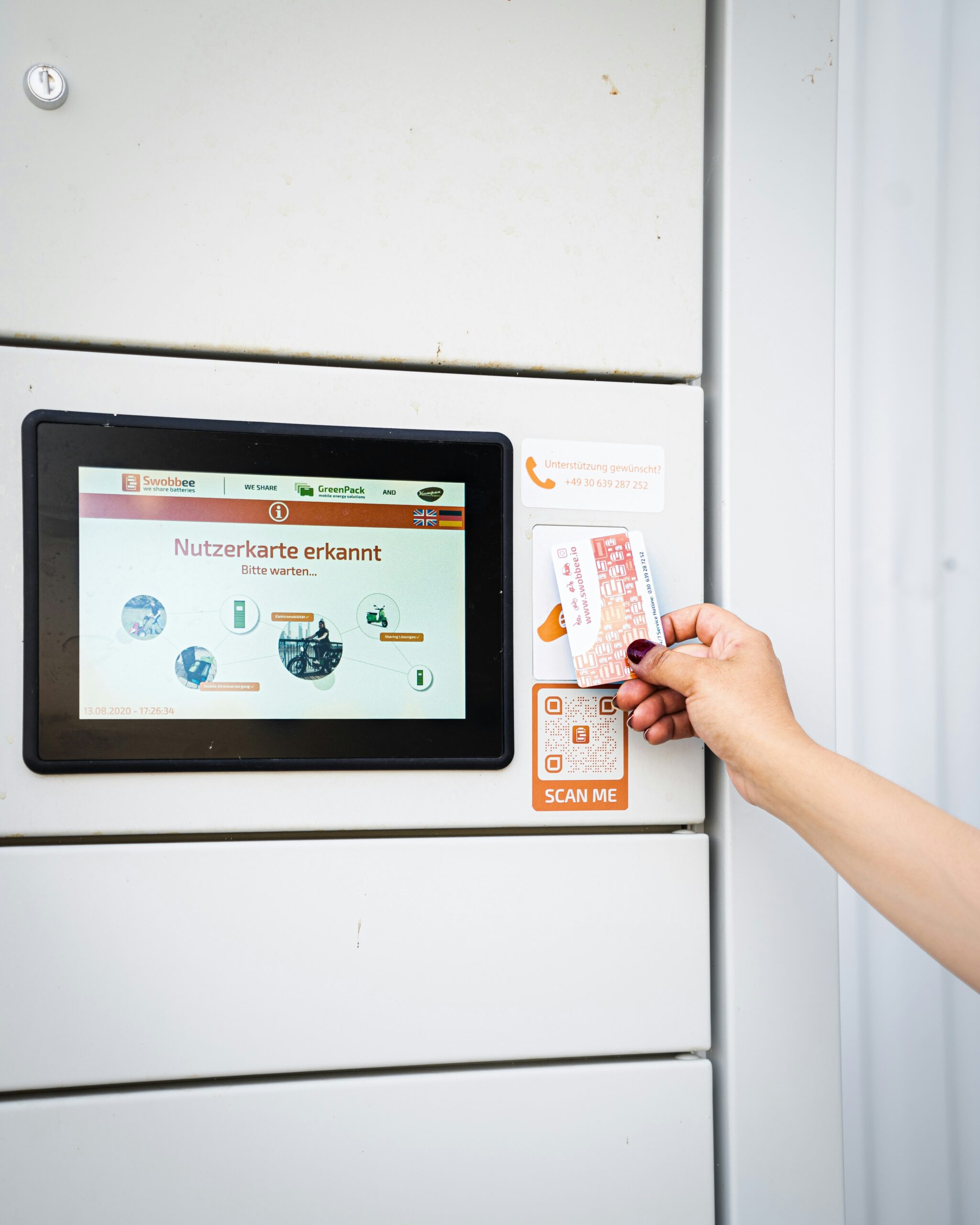Introduction to Battery Holders
Battery holders are essential components in various electronic devices, serving the fundamental purpose of securely holding batteries in place. These devices ensure that batteries maintain a proper electrical connection with the device they power, which is critical for optimal performance. By providing a stable environment for batteries, holders help to prevent issues such as poor connectivity or damage that can occur when batteries are improperly secured.
The construction of battery holders can vary significantly depending on their intended use. They are typically made from durable materials, such as plastic or metal, designed to withstand the stresses associated with frequent battery replacement. The design features can also differ, accommodating various battery sizes and types, including cylindrical batteries like AA or AAA, and rectangular forms such as 9V batteries. This range of compatibility makes battery holders versatile for many applications, from household gadgets to complex electronic systems.
Beyond their basic function, battery holders come equipped with a range of features tailored to specific requirements. For instance, some holders incorporate clip mechanisms that allow for effortless insertion and removal of batteries, while others may include built-in terminals for easy connection to circuits. Additionally, battery holders might be designed for single or multiple batteries, catering to power requirements that vary across devices.
The applications for battery holders are vast and varied. They are used in consumer electronics, medical devices, remote controls, toys, and many other fields. As technology advances, the design and utility of battery holders evolve, highlighting their importance in modern electronic applications. Understanding the various types and their purposes can aid in selecting the right battery holder for specific requirements, thus ensuring efficiency and reliability in the devices we utilize daily.
Types of Battery Holders
The marketplace features a variety of battery holders, each designed with specific applications and battery sizes in mind. Understanding the different types available is crucial for selecting the right holder for your project or device. Battery holders can be categorized into three primary types: single-cell, multi-cell, and specialized holders.
Single-cell battery holders are designed to securely accommodate one battery at a time. These holders are commonly used for standard batteries such as AA, AAA, and 9V. Their design ensures that the battery is held firmly in place, providing an effective electrical connection while allowing for easy battery replacement. Single-cell holders are particularly advantageous in compact electronic devices, such as remote controls and wireless keyboards, where space is limited.
Multi-cell battery holders, on the other hand, are designed to contain multiple batteries in a single unit. They can hold batteries in series or parallel configurations, depending on the electrical requirements of the application. This type of holder is often used in larger electronic devices that require higher voltage or capacity. For instance, devices like flashlights or portable power banks benefit significantly from multi-cell holders, which facilitate the simultaneous use of multiple batteries.
Specialized holders cater to unique battery sizes and configurations, which may not fit neatly into the standard categories. Examples include holders designed for lithium-ion batteries or custom-sized batteries used in specialized equipment. These holders often feature unique designs, such as locking mechanisms or adjustable contacts, to ensure compatibility and safety based on the specific battery type. Specialized holders are essential in applications ranging from medical devices to robotics, where precise battery performance is crucial.
Materials Used in Battery Holders
Battery holders are crucial components in various electronic devices, serving to securely house batteries while providing reliable electrical connections. The choice of materials used in the construction of battery holders plays a significant role in determining their durability, weight, cost, and overall performance. Commonly, battery holders are made from three principal materials: plastic, metal, and, increasingly, eco-friendly alternatives.
Plastic is perhaps the most widely used material in battery holders. It offers several advantages, including lightweight characteristics and resistance to corrosion. Additionally, plastic can be molded into various shapes, allowing for versatile designs to accommodate different battery sizes and types. However, the use of plastic presents environmental concerns, particularly regarding its recyclability and potential pollution. It is vital for manufacturers to consider the long-term impact of plastic waste on the environment.
Metal battery holders, often made from materials such as steel or aluminum, are known for their strength and enhanced conductivity. These metal holders tend to provide better durability, making them suitable for applications requiring robust support. However, the increased weight and higher production costs may pose challenges for certain consumer electronic products where portability is a priority.
In response to growing environmental concerns, the industry has seen a rise in the use of eco-friendly materials, such as biodegradable plastics and recycled metals. These alternatives not only address the issue of waste but can also enhance the sustainability of battery holders without compromising their functional performance. Manufacturers increasingly recognize the importance of not only the material used but also its lifecycle—from production to disposal.
In conclusion, the materials used in battery holders significantly influence their functionality and environmental impact. Understanding the benefits and drawbacks of plastic, metal, and eco-friendly alternatives allows consumers and manufacturers to make informed choices that meet performance needs while promoting sustainability.
How to Choose the Right Battery Holder
Selecting the appropriate battery holder is a critical decision that can significantly impact the performance and longevity of your project. The first factor to consider is the size and type of battery you intend to use. Battery holders are specifically designed to accommodate different battery sizes, such as AA, AAA, 18650, or CR2032. Ensuring that the holder matches your battery type will prevent fitting issues and ensure optimal power delivery.
Next, assess the application for which the battery holder will be utilized. Different applications may demand specific features. For instance, if you require a battery holder for a portable device, a lightweight and compact design is essential. Conversely, for more stationary setups, durability may take precedence. Battery holders tailored for electronics might incorporate additional features such as built-in fuses or connectors, further enhancing functionality.
Another significant aspect is the mounting options available. Depending on the design of your project, you may need a battery holder that can be surface-mounted, panel-mounted, or free-standing. Determine how the holder will fit within your overall design. Consider holders that allow easy access for battery replacement, as this can enhance user experience and reduce maintenance downtime.
Lastly, take into account the environmental conditions in which the battery holder will operate. Factors such as temperature extremes, humidity levels, and exposure to dust or moisture can affect the choice of material and protection needed for the holder. Ensure that the chosen holder meets the necessary specifications to withstand these conditions, especially in outdoor applications or harsh environments.
By considering these key factors—battery size and type, application, mounting options, and environmental conditions—you can select a battery holder that not only meets your immediate needs but also supports the long-term success of your project.
Installation and Usage Tips
Proper installation and usage of battery holders are critical for ensuring efficiency and longevity in applications ranging from household appliances to electronic devices. To begin with, it is essential to prepare the necessary tools for installation. A screwdriver, wire cutters, and, in some cases, a soldering iron will be required. Depending on the specific design of the battery holder, you might also need heat-shrink tubing or electrical tape for securing connections.
When installing a battery holder, ensure that the orientation of the batteries is correct, following the markings within the holder that indicate positive and negative terminals. Incorrect insertion can lead to potential damage to both the holder and the connected device. Before securing the connections, double-check the interface to prevent any misalignment.
Common pitfalls during installation include inadequate tightening of screws leading to loose connections, which can result in poor electrical conductivity. Additionally, avoid exposing the holder to moisture or extreme temperatures, as these factors can significantly shorten the lifespan of the component. It is advisable to use battery holders with protective casings when intended for outdoor usage or in variable environments.
Maintenance practices are crucial for ensuring the reliability of battery holders. Periodically inspect the connections for signs of corrosion or fraying wires. Cleaning the terminals with a soft cloth can help mitigate corrosion buildup. Furthermore, it is recommended to replace batteries regularly and avoid over-discharging, as this can affect both the batteries’ performance and the holder’s integrity.
By following these installation and usage tips, users can expect a seamless experience with battery holders, maximizing their performance while minimizing potential issues.
Battery Holder Safety Considerations
When utilizing battery holders, safety should be the primary concern. Improper handling or storage of batteries can lead to a range of hazards, including short circuits, chemical leaks, and even fires. Therefore, it is critical to understand the potential risks associated with different battery types and their respective holders.
One of the key safety issues is ensuring that batteries are stored in holders designed specifically for their chemistry, such as alkaline, lithium, or nickel-metal hydride batteries. Each type of battery has unique characteristics and voltage levels that can affect performance and safety. For instance, lithium batteries are more volatile and can be prone to overheating if not correctly housed. Consequently, using a battery holder that accommodates the specific type of battery ensures that all safety precautions are taken into account.
It is also essential to consider the physical condition of both the batteries and the holders. Batteries that are damaged, swollen, or leaking should be immediately replaced and handled with care. In addition, battery holders should be regularly inspected for signs of wear, corrosion, or physical damage that could compromise the integrity of the setup. Proper cleaning and maintenance of the holders can extend their usability and ensure safe operations.
When handling batteries, it is advisable to wear protective gear, such as gloves and safety goggles, particularly when working with rechargeable or high-capacity batteries that can retain significant energy. Furthermore, batteries should be stored in a cool, dry place away from direct sunlight, flammable materials, and extreme temperatures to minimize the risk of accidents. Appropriate labeling of battery types and their capacities can also aid in preventing inadvertent misuse.
In conclusion, focusing on the safety considerations surrounding battery holders, including proper handling, storage, and the importance of using the right holders for specific battery chemistries, helps to mitigate risks and promote safer practices.
Applications of Battery Holders
Battery holders serve a fundamental role in facilitating the use of batteries across a multitude of industries and devices. Their versatility is evident in both common household applications and specialized professional equipment. One of the most recognizable uses of battery holders can be found in everyday items such as flashlights and remote controls. These devices rely on efficient battery storage to ensure that consumers can easily replace drained batteries without hassle, thereby extending the practicality and longevity of the appliance.
In addition to consumer electronics, battery holders are integral in more advanced technologies. For instance, in the realm of robotics, battery holders provide a reliable means of powering both simple and complex robotic systems. They ensure that the battery remains firmly in place, thus preventing any disruption in power supply that could hinder performance during critical tasks. This stability is essential in maintaining consistent operational capabilities in robots used for manufacturing, healthcare, and even entertainment.
Moreover, battery holders find significant applications in medical equipment. Devices such as portable ultrasound machines, heart monitors, and infusion pumps frequently utilize battery holders to maintain uninterrupted power. The reliable functionality provided by these holders is crucial, as any loss of power in medical devices could pose serious risks to patients. As technology advances, the need for reliable battery holders in the medical sector continues to grow, emphasizing their importance in modern healthcare solutions.
Furthermore, battery holders are commonly used in telecommunications. Wireless devices, such as smartphones and tablets, rely on these components for effective battery integration. Ensuring correct positioning and connection through battery holders enhances the device’s reliability and performance. Overall, the diversity of battery holder applications across different industries underscores their importance in improving functionality and efficiency in various technological contexts.
DIY Projects Using Battery Holders
Battery holders are essential components in a wide range of DIY projects, allowing enthusiasts and hobbyists to create innovative gadgets and home-based devices. Whether you are a beginner exploring electronics or a seasoned maker, integrating battery holders into your projects can enhance functionality and ease of use. Below are some creative project ideas that highlight the versatility of battery holders.
A simple introduction to electronics can be achieved through building a basic flashlight. Using an LED light, a switch, and a suitable battery holder, one can create a portable lighting solution. This project requires minimal components and is perfect for beginners. The battery holder not only secures the batteries but also simplifies the power connection and replacement.
For those looking to delve into more advanced projects, consider assembling a mini robot or a remote-controlled car. These projects often require multiple electronic components, and the battery holder serves as the primary power source. Using rechargeable battery holders can enhance the sustainability of the project, allowing for repeated use while minimizing waste.
Another inspiring idea is creating a custom-powered alarm clock. By utilizing a microcontroller and a battery holder, you can design a clock that suits your style and preferences. This project allows you to learn about programming and electronic circuits, while the battery holder ensures your device remains powered even during outages.
Additionally, if you are interested in arts and crafts, integrating battery holders into decorative lighting, such as fairy lights or LED wall art, can yield beautiful results. This combination of aesthetics and functionality showcases the versatility of battery holders in both electronics and artistic endeavors.
In summary, battery holders are crucial in various DIY projects, ranging from simple circuit explorations to complex robotic creations. Their role in ensuring reliable power supply can inspire creativity, making them invaluable components in the maker community.
Future Trends in Battery Holder Technology
The landscape of battery holder technology is rapidly evolving, driven by advancements in materials and design, as well as the integration of smart technologies. These developments are influencing how battery holders are designed, manufactured, and implemented across various applications. One of the primary trends is the use of lightweight, durable materials such as carbon fiber and advanced polymers that not only enhance the structural integrity of battery holders but also contribute to reducing the overall weight of devices. This is particularly important in sectors like automotive and aerospace, where weight reduction can lead to improved efficiency and performance.
Another notable trend is the emphasis on modular design. Modular battery holders allow for easier assembly and disassembly, enabling users to customize their setups based on specific power needs. This flexibility can significantly benefit applications in fields such as renewable energy, where different battery sizes and configurations may be required depending on the system. Moreover, modular designs facilitate easier repairs and upgrades, prolonging the lifecycle of the equipment.
Integration with smart technologies represents a significant leap forward. Battery holders equipped with smart features, such as real-time monitoring systems, can provide data on battery health, charge levels, and performance metrics. These innovations allow for better energy management and predictive maintenance, which can enhance user experience and reliability. The Internet of Things (IoT) is increasingly influencing battery holder designs, enabling remote management and data analytics capabilities.
As these trends continue to shape the battery holder market, the potential applications across various industries are expanding. From consumer electronics to electric vehicles, the future of battery holders promises more sustainable, efficient, and user-friendly solutions that are in line with the growing demand for advanced energy storage systems.


